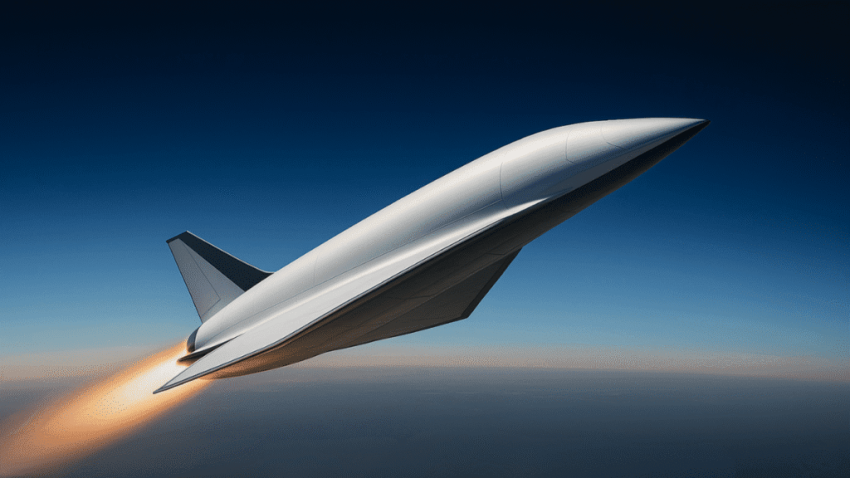ESA Launches Ambitious Invictus Program for Hypersonic Aircraft
The European Space Agency (ESA) has officially announced the launch of a groundbreaking initiative called the Invictus program. This major development marks a significant step forward in Europe’s efforts to create a hydrogen-powered hypersonic aircraft. The futuristic air vehicle is expected to reach speeds of up to Mach 5, which is approximately 6125.2 kilometers per hour.
The goal is to design a fully reusable aircraft that behaves like a plane during take-off but transforms into a rocket-like vehicle capable of reaching orbital altitudes. This means it would lift off horizontally from a runway and eventually move into space without the need for vertical launch systems like traditional rockets.
Collaboration with Industry Leaders
ESA is working on this project in collaboration with British engineering and technology company Frazer-Nash. Additional partners include companies like Spirit Aero Systems, known for expertise in aircraft fuselage design, and Cranfield University, a recognized research institution. Together, this team will work on a preliminary design that includes all systems of the hypersonic aircraft. ESA has set an ambitious target: the initial design must be completed within 12 months.
Funding and Support
The funding for this advanced aerospace effort will be sourced from ESA’s General Support Technology Program (GSTP) and Technology Development Element (TDE). These programs aim to support innovation in space-related technologies. However, ESA has not disclosed how much money will be spent on this specific mission.
Tackling the Heat Challenge at Hypersonic Speeds
One of the biggest technical challenges of traveling at hypersonic speeds is extreme heat. When an aircraft moves that fast through the air, its outer surface faces enormous friction. This friction generates temperatures that can damage or even melt traditional aircraft materials.
In its official statement, ESA explained that the surface friction and shock heating—caused by fast air compression—are serious obstacles for the Invictus aircraft. To manage these risks, engineers are planning to use a pre-cooled, hydrogen-powered air-breathing propulsion system. This means that instead of relying only on stored oxygen, like in conventional rockets, the aircraft will breathe in air, similar to a jet engine. Before this air enters the engine, it will be rapidly cooled down using advanced technology. This not only reduces heat damage but also improves engine efficiency.
Key Technology Behind the Cooling System
The key technology behind this cooling system comes from ESA’s SABRE study (Synergistic Air-Breathing Rocket Engine). This study laid the foundation for precooled engine systems that allow horizontal take-off spacecraft to function effectively. The core idea is to cool extremely hot air—heated by high-speed movement—within fractions of a second, using a pre-cooler unit.
This cooling technology has already been tested successfully. The British engine manufacturer involved in earlier SABRE projects managed to use this system to cool conventional jet engines, proving its practical value. That earlier work was also supported by the same ESA funding programs now backing the Invictus project.
Strategic Use and Global Context
Beyond its technical achievements, the Invictus aircraft holds strategic significance. ESA has stated that the hypersonic aircraft will be used as a research platform. This means scientists and engineers will study its performance to gather insights into high-speed flight and reusable aerospace systems.
The program comes at a time when other global powers are advancing rapidly in hypersonic technology. For example, China is already testing drones and missiles that can fly at hypersonic speeds. These systems have military as well as research applications. China’s lead in this field has raised concerns about a technology gap, especially in areas like military hypersonic missiles.
With the Invictus program, ESA aims to contribute meaningfully to hypersonic research and technology in Europe. The project could potentially reduce reliance on non-European technology for space and defense systems.
Environmental Benefits
By focusing on hydrogen fuel, the aircraft also fits into broader environmental goals. Hydrogen is seen as a cleaner alternative to traditional aviation fuels. Using hydrogen in a reusable aircraft could help lower the environmental footprint of high-speed air and space travel.
A Multifaceted Aerospace Initiative
The Invictus program combines multiple cutting-edge fields: aerospace engineering, propulsion systems, materials science, and thermal management. It reflects a growing need for collaboration between government agencies, research institutions, and private companies to tackle the complex demands of modern aerospace projects.
ESA’s clear focus on reuse, clean fuel, and high performance at hypersonic speeds makes the Invictus program one of the most ambitious efforts currently underway in Europe’s space and aerospace sector.
